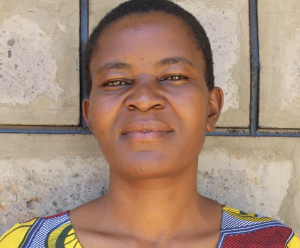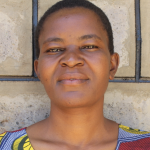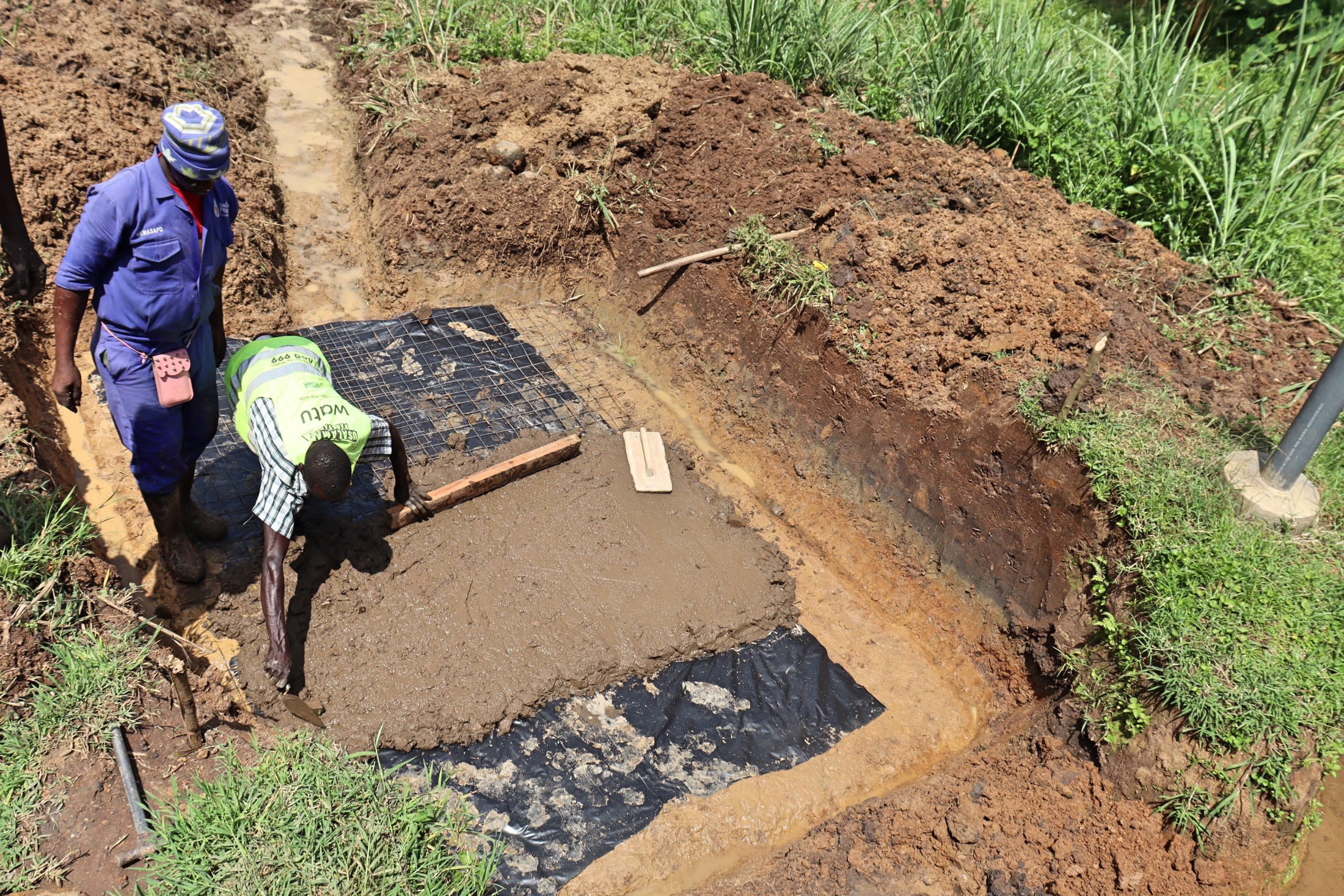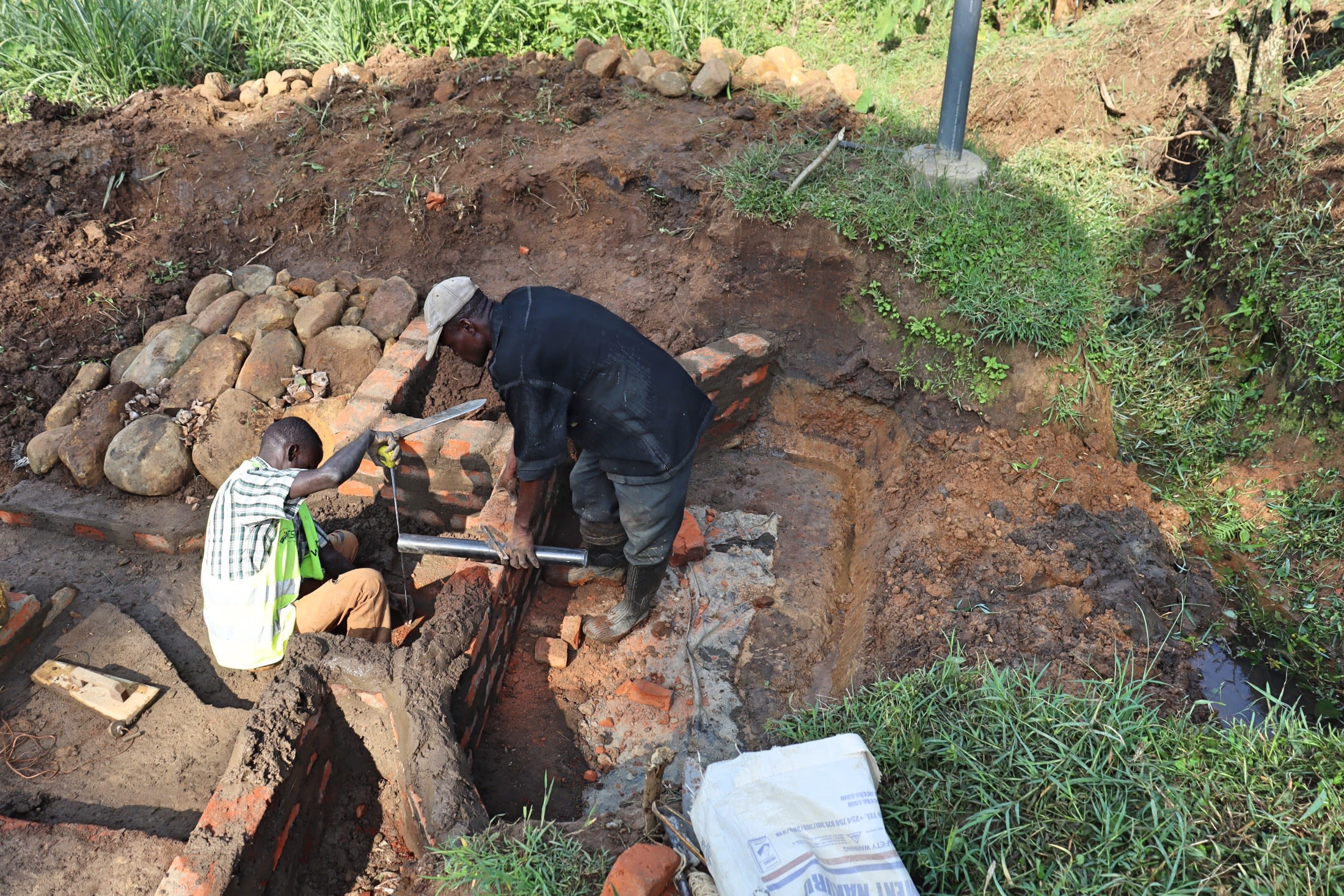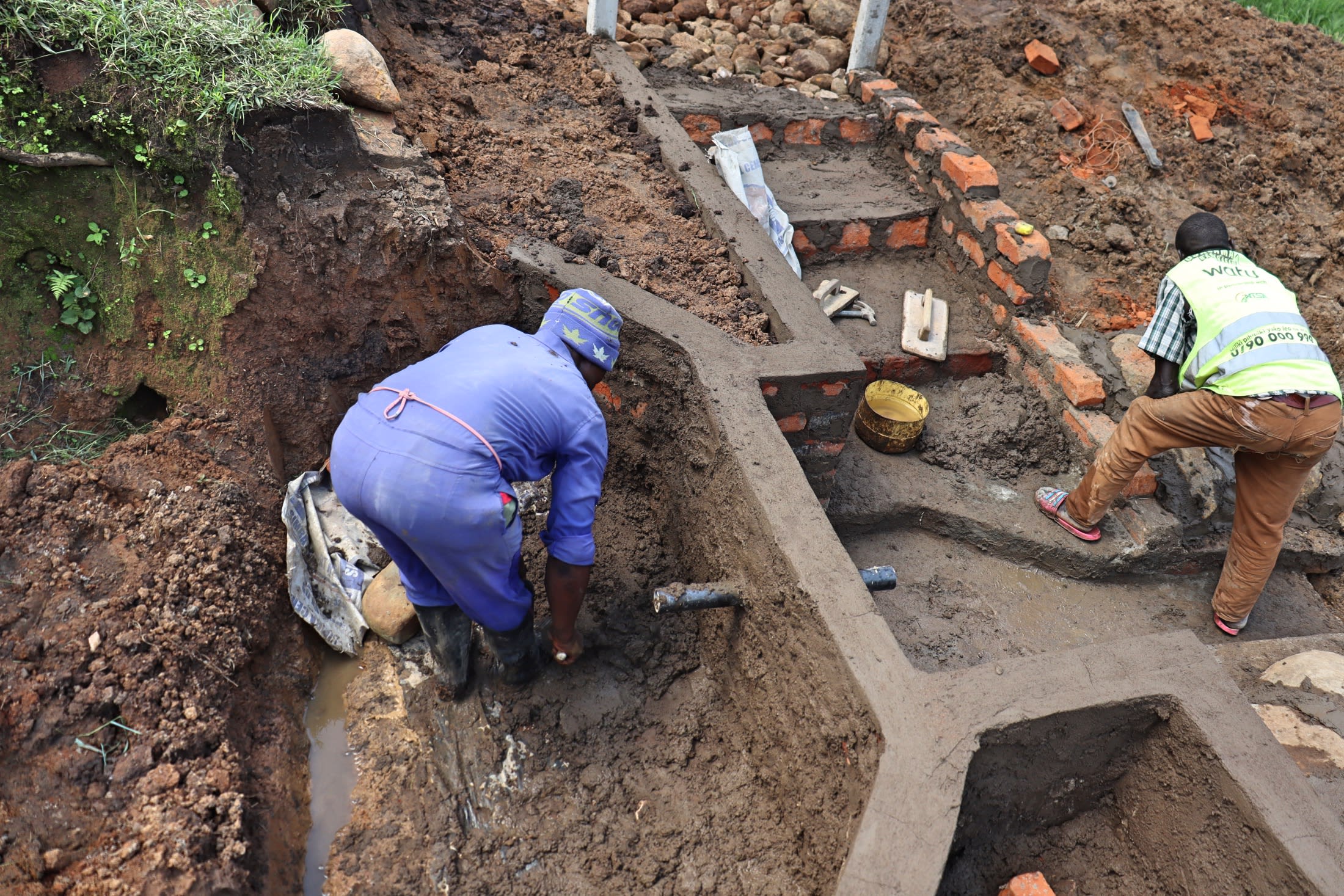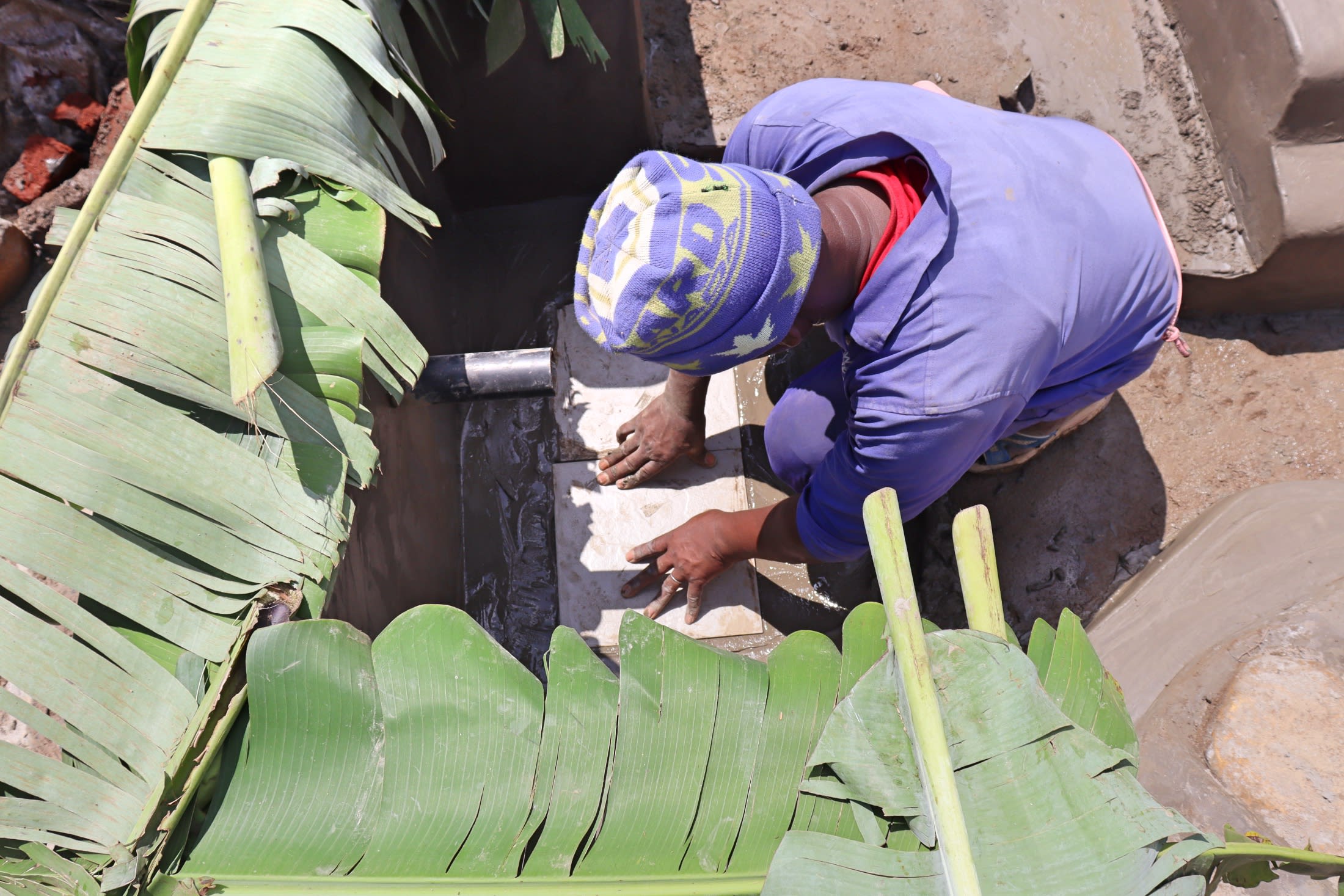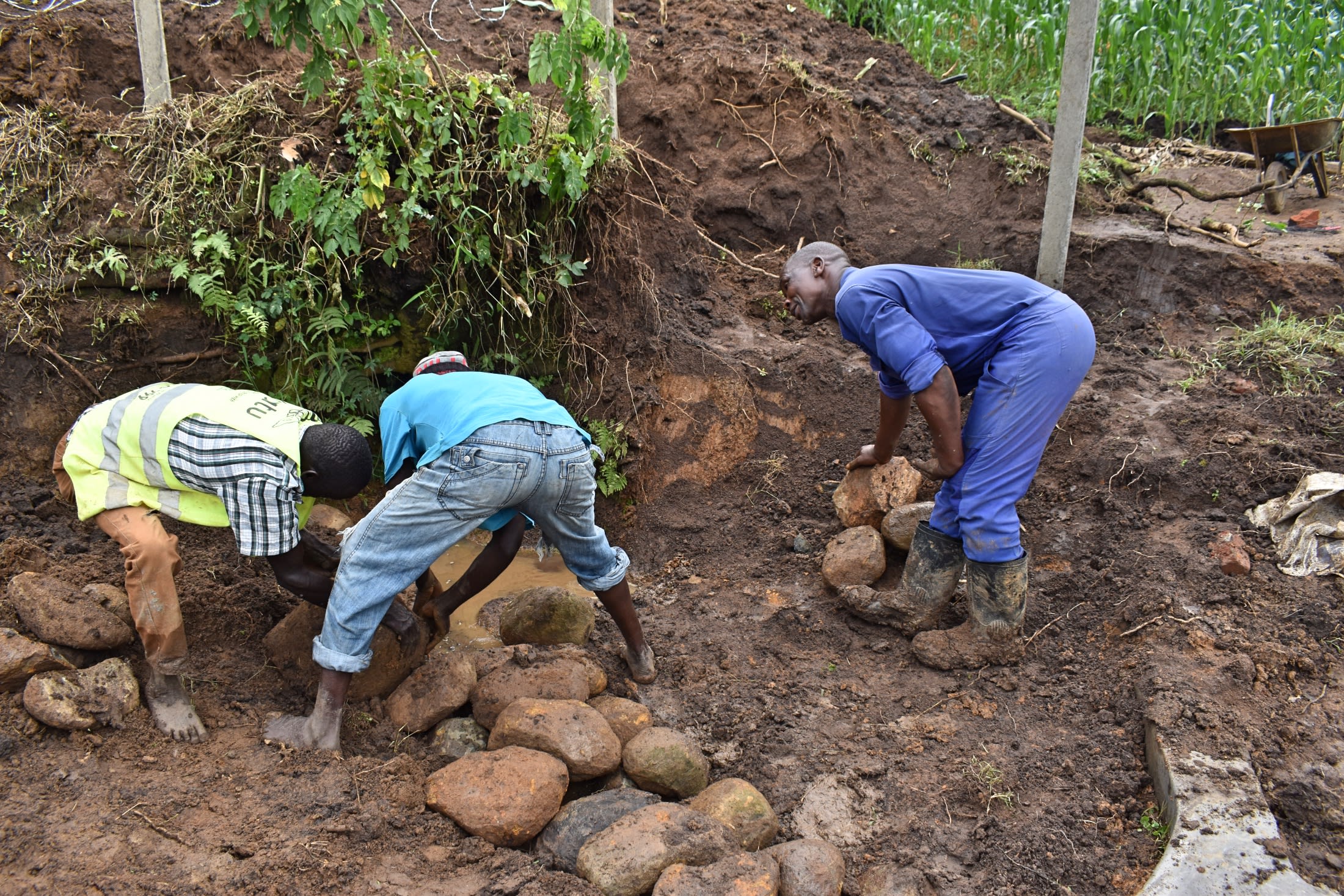The 140 community members in Emukangu have difficult water choices to make every single day.
Omukuva Spring is their closest water source, but is not protected and only offers dangerous drinking water.
"My business has stopped because all the amount of money I had has been used for medication, and the cause is this water," said 41-year-old farmer Hassan Moses.

Understandably, adults are not the only ones suffering from drinking dirty water. Children also feel the effects, and often more severely.
"Personally, my [school] performance has gone down because I rarely go to school [because] most of the time [I] am hospitalized," said 11-year-old Sharon N., shown below collecting water.

“If education is the key to helping children escape poverty, access to water and sanitation is key to helping children safely maximize their education. To neglect this is to be careless with the well being and health of children," said Kelly Ann Naylor, Global Chief of Water, Sanitation and Hygiene at UNICEF.
In the spring's current state, it is a small pool of water located at the base of some trees, surrounded by dirt banks and full of rocks. But it is wide open to contamination, and because people must balance themselves on rocks in the water, they also leave everything on their feet in the water they are about to collect. It takes precision and great care to balance on the wet, slimy rocks while bending over to submerge a water container under the water surface so it will fill up, especially during the rainy season when it becomes especially treacherous.

Fetching water here is a tiring and tedious task, for water that will likely make them sick, but people drink it anyway because they have little alternative.
“Contaminated water can transmit diseases such diarrhoea, cholera, dysentery, typhoid and polio. Contaminated drinking-water is estimated to cause 502 000 diarrhoeal deaths each year.” - WHO Africa
Some rely on another protected spring in a neighboring community because it offers safer water, but it is far away. And after the long journey, community members still must wait in long lines to fetch water, wasting hours of valuable time traveling and waiting, leaving little time to do anything else in a day.

By protecting Omukuva Spring, community members should be able to quickly access safe water to meet their daily needs and still have time to accomplish the day's other essential tasks. And hopefully, everyone will remain healthy as they do so.
What We Can Do:
Spring Protection
Protecting the spring will help provide access to cleaner and safer water and reduce the time people have to spend to fetch it. Construction will keep surface runoff and other contaminants out of the water. With the community's high involvement in the process, there should be a good sense of responsibility and ownership for the new clean water source.
Fetching water is a task predominantly carried out by women and young girls. Protecting the spring and offering training and support will, therefore, help empower the female members of the community by freeing up more of their time and energy to engage and invest in income-generating activities and their education.
Training on Health, Hygiene and More
To hold training, we work closely with both community leaders and the local government. We ask community leaders to invite a select yet representative group of people to attend training who will then act as ambassadors to the rest of the community to share what they learn.
The training will focus on improved hygiene, health, and sanitation habits in this community. With the community's input, we will identify key leverage points where they can alter their practices at the personal, household, and community levels to affect change. This training will help to ensure participants have the knowledge they need about healthy practices and their importance to make the most of their water point as soon as water is flowing.
Our team of facilitators will use a variety of methods to train community members. Some of these methods include participatory hygiene and sanitation transformation, asset-based community development, group discussions, handouts, and demonstrations at the spring.
One of the most important issues we plan to cover is the handling, storage, and treatment of water. Having a clean water source will be extremely helpful, but it is useless if water gets contaminated by the time it is consumed. We and the community strongly believe that all of these components will work together to improve living standards here, which will help to unlock the potential for these community members to live better, healthier lives.
We will then conduct a small series of follow-up trainings before transitioning to our regularly scheduled support visits throughout the year.
Training will result in the formation of a water user committee, elected by their peers, that will oversee the operations and maintenance of the spring. The committee will enforce proper behavior around the spring and delegate tasks that will help preserve the site, such as building a fence and digging proper drainage channels. The fence will keep out destructive animals and unwanted waste, and the drainage will keep the area's mosquito population at a minimum.




 Protected Spring
Protected Spring
 Rehabilitation Project
Rehabilitation Project










